Stardust
____________
Stardust (m. Hoagy Carmichael, w. Mitchell Parish)
From Wikipedia (image added):
 According to Carmichael, the inspiration for “Stardust” (the song’s original title was “Star Dust”, which has long since been compounded into “Stardust”)[3] came to him while he was on the campus of his alma mater, Indiana University, in Bloomington, Indiana. He began whistling the tune, then rushed to the Book Nook, a popular student hangout, and started composing. He worked to refine the melody over the course of the next several months, likely in Bloomington or Indianapolis (sources cite various locations, and Carmichael himself liked to embellish the facts about the song’s origins).[4] “Stardust” was first recorded in Richmond, Indiana, for Gennett by Carmichael with Emil Seidel and his Orchestra and the Dorsey brothers as “Hoagy Carmichael and His Pals” on October 31, 1927, as a peppy but mid-tempo jazz instrumental.[5] Carmichael said he was inspired by the improvisations of Bix Beiderbecke.[6] The tune at first attracted only moderate attention, mostly from fellow musicians, a few of whom (including Don Redman) recorded their own versions.
According to Carmichael, the inspiration for “Stardust” (the song’s original title was “Star Dust”, which has long since been compounded into “Stardust”)[3] came to him while he was on the campus of his alma mater, Indiana University, in Bloomington, Indiana. He began whistling the tune, then rushed to the Book Nook, a popular student hangout, and started composing. He worked to refine the melody over the course of the next several months, likely in Bloomington or Indianapolis (sources cite various locations, and Carmichael himself liked to embellish the facts about the song’s origins).[4] “Stardust” was first recorded in Richmond, Indiana, for Gennett by Carmichael with Emil Seidel and his Orchestra and the Dorsey brothers as “Hoagy Carmichael and His Pals” on October 31, 1927, as a peppy but mid-tempo jazz instrumental.[5] Carmichael said he was inspired by the improvisations of Bix Beiderbecke.[6] The tune at first attracted only moderate attention, mostly from fellow musicians, a few of whom (including Don Redman) recorded their own versions.
Mitchell Parish wrote lyrics for the song, which were published in 1929, based on his and Carmichael’s ideas. A slower version had been recorded in October 1928, but the transformation came on May 16, 1930, when bandleader Isham Jones recorded it as a sentimental ballad.[7] “Stardust” is a 32-bar melody with a slightly unusual ABAC structure preceded by a 16-bar verse. Although the verse is often omitted in recordings, Frank Sinatra made a recording in 1961 (released the next year on Sinatra and Strings) of just the verse. The verse and chorus have the same final cadence, though other than that they are musically distinct.
Excerpt from an article published at WICN.org (now defunct):
It seems almost churlish to dispute Carmichael’s legendary story of how he came to write “Star Dust,” since it fits so well with the song. Will Friedwald, in his book Stardust Melodies, describes Carmichael’s version of the event: “Our hero, while paying a nostalgic visit to his alma mater [Indiana University], happens to pass the campus’s lover’s lane, or “spooning wall” as it was known, and begins thinking about all the girls he’d loved and lost in his college days. While pondering on one old school romance in particular, the kernel of a melody just pops into his head. A frantic Carmichael dashes in search of a piano and locates one in the campus coffee house – a cozy little joint called the “Book Nook” – where, oblivious to all else, our hero works the melody out and gets it down on paper. Shortly afterward, he plays it for a friend and former classmate named Stu Gorrell, who remarks that it reminds him “of the dust from the stars drifting down through a summer night.” From there comes the title “Star Dust.” “I had no idea what the title meant,” Carmichael later said, “but I thought it was gorgeous.”
Hoagy Carmichael & His Pals — recorded on 31 October 1927; issued in January 1928 on the 10-inch 78 rpm single Gennett 6311, as the B-side of “One Night in Havana”
.
.
Irving Mills and his Hotsy Totsy Gang — recorded on 20 September 1929; issued on Brunswick 4587, c/w “Melancholy,” the opposite side recorded by Joe Rines and his Triadors
personnel (from the session(s)?), adapted from the list given by the YouTube provider:
- Manny Klein, Leo McConville — trumpet
- Miff Mole — trombone
- Jimmy Dorsey, Arnold Brilhart — clarinet, alto saxophone
- Pee Wee Russell — clarinet, tenor saxophone
- Hoagy Carmichael — piano, cello
- Joe Tarto — brass bass (tuba)
- Chauncey Morehouse — drums
.
Louis Armstrong and his Orchestra — recorded 4 November 1931; issued on the 78 rpm single Columbia 2574-D, c/w “Chinatown, My Chinatown”
.
Isham Jones and his Orchestra – 1931
.
Django Reinhardt
Recorded 2 March 1935, in Paris – Coleman Hawkins (ts), Stephane Grappelly (p), Django Reinhardt (g), Eugene d’Hellemmes (b), Maurice Chaillou (d)
.
Garnet Clark and his Hot Club’s Four — Paris — Django Montreal dates this recording 23 November 1935 while Djangopedia has 25 November and the youtube provider says 25 December, Christmas Day. I’m going with Django Montreal.
Bill Coleman (trumpet and vocal)
George Johnson(clarinet and alto sax)
Garnet Clark (piano)
Django Reinhardt (rhythm guitar)
June Cole (bass)
.
Hoagy Carmichael: piano, vocal; Spike Jones: drums — recorded 11 May 1942, Los Angeles, according to the site 20sJazz.com
.
.
Harry James & his Orchestra, vocal: Frank Sinatra — Live from the Roseland Ballroom, New York City, 8 July 1939 – According to the discography, blue-eyes.com, the arrangement was by Andy Gibson and the recording was an “aircheck.”
.
Tommy Dorsey and his Orchestra, vocals: Frank Sinatra and the Pied Pipers — recorded 11 November 1940
.
Artie Shaw and his Orchestra – recorded 7 October 1940, Hollywood, CA
Artie Shaw (clarinet), Billy Butterfield (trumpet), Johnny Guarnieri (piano), Jack Cathcart, George Wendt (trumpet); Vernon Brown, Jack Jenney (trombone); Les Robinson, Neely Plumb (alto sax); Bus Bassey, Jerry Jerome (tenor sax); Al Hendrickson (guitar), Jud DeNaut (bass), Nick Fatool (drums), and a 9-piece string section — arrangement: Lennie Hayton & Artie Shaw
.
Lionel Hampton and the Just Jazz All Stars – Pasadena Civic Center, Pasadena, CA – 4 August 1947
Guitar – Barney Kessel
Piano – Tommy Todd
Saxophone, Alto – Willie Smith (1910-1967)
Saxophone, Tenor – Corky Corcoran
Trumpet – Charlie Shavers
.
Dave Brubeck Quartet — concert at College of the Pacific, 14 December 1953
- Dave Brubeck – piano
- Paul Desmond – alto saxophone
- Ron Crotty – bass
- Joe Dodge – drums
.
Artie Shaw and his Orchestra – from the album Moonglow – 1956
.
Sarah Vaughan – from No Count Sarah – 1958
.
Clark Terry – London, 1967
Adapted from the description attached by the video provider:
During a JATP [Jazz at the Philharmonic] concert in London Clark Terry is featured on fluegelhorn in “Stardust”. With him are Teddy Wilson: piano, Louise Bellson: drums, and Bob Cranshaw: bass.
.
Wynton Marsalis – Hot House Flowers – 1984
Wynton Marsalis (trumpet)
Branford Marsalis (tenor and soprano saxophone)
Jeff Watts (drums)
Ron Carter (bass)
Kenny Kirkland (piano)




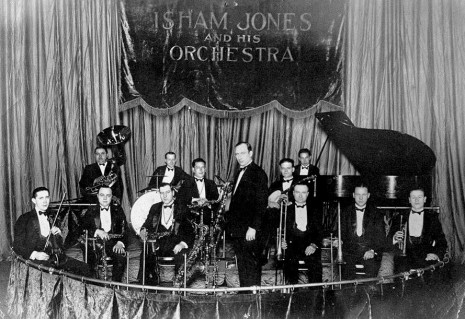

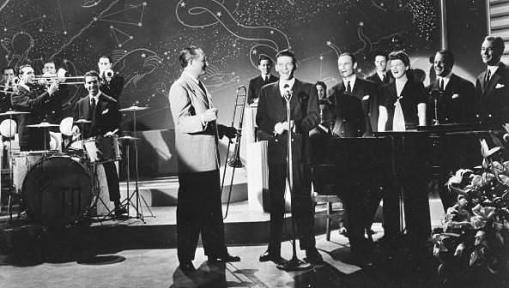







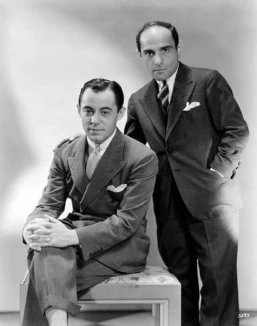

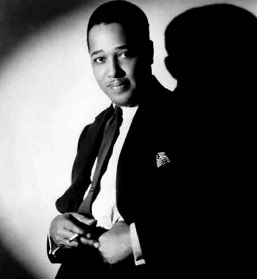


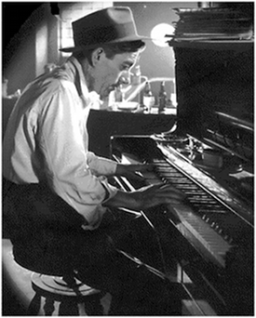
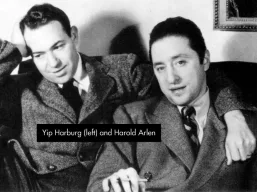




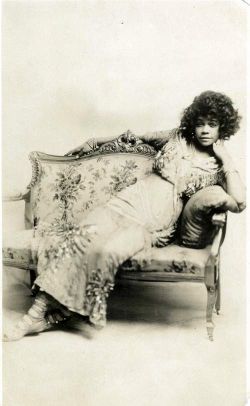










Aug 15, 2010 @ 12:00:10
Thanks for the detailed post. I have just recorded this song with a singer on CD and was looking for material to put on my blog. I will make a link to yours at I don’t think I wouldhave much more to add from the details side. I enjoyed finding out to what extent it is a product of collaboration. Non-musicians often have this fantasy about the “genius” of that romanticised moment of creation, but the reality is much more often one of slog, grind and revision.
Regards
Albert COmbrink
LikeLiked by 1 person
Sep 14, 2010 @ 04:56:49
Hi Albert,
Sorry for the very long delay in responding. I recall seeing your message when I was busy and thinking “Well, I’ll get to that later on.” But I didn’t mean a month later on.
I think you’re correct regarding the hard work involved in creation. There are notable examples of fast writers — Richard Rodgers, I believe, claimed that he routinely wrote songs in 15 minutes. There is a famous story of Irving Berlin writing “Anything You Can Do” during a taxi ride home following a request from Rodgers and Hammerstein for an additional song to fit a certain situation (a “challenge” song, suggested Rodgers, since the two characters were feuding). However, I’ve also read that Berlin typically worked all night long composing and perfecting his songs.
Good luck on your projects, Jim
LikeLike
Jan 30, 2012 @ 22:20:49
Great post! I’m looking for Louis Armstrong’s third take of “Stardust” (1931), but haven’t had any luck. Do you have any idea where I might find this version? redhotjazz only has two version up right now (takes 1 & 4). Thanks for your help!
LikeLiked by 1 person
Jan 30, 2012 @ 23:23:52
skozobar, Hi. No, I don’t know where to find it. In the third section of sessions listed at The Louis Armstrong Discography, “Stardom (1929-1932),” there is a note regarding take three which indicates it is available on an LP. However, no LP title, catalog number, or other identifying information is given. Redhotjazz, on the other hand, lists a take 2, and not take 3, but as you said has only the audio files for takes 1 and 4. I’ll let you know if I find it. — Jim
LikeLike
Jan 30, 2012 @ 23:43:06
(edited on 5 September 2020)
skozobar,
An explanation found. According to a major discography, “take -1” was erroneously labeled “take -3” on an album release. It was incorrectly numbered on the compilation album Louis Armstrong Special, CBS 65251, released in Europe in 1973 (France and the Netherlands, for example). On page 79 of the book All of Me: The Complete Discography of Louis Armstrong, by Jos Willems (2006), are the following notes:
This “complete discography” doesn’t list “take -3” of Armstrong’s 4 November 1931 recordings of “Stardust” at all, suggesting that the take may never have been released. The book also omits take 2 from its list, which includes only takes 1 and 4. I see no reason to add a hyphen to any take number, since the hyphen merely serves to connect the matrix number to the number of the take. Take 2 had been mentioned by the now defunct site redhotjazz.com in its Louis Armstrong and his Orchestra discography.
LikeLike
Feb 08, 2012 @ 16:44:24
Hi doc, thanks for the info. I found the LP (Louis Armstrong V.S.O.P.) with “take -3” – but it was actually take -1, just like it says in the discography. It’s hard to understand how so many other discographies could list it if it doesn’t exist. It makes me crazy! But I suppose someone would have released it commercially by now if it did exist. Thanks again.
LikeLiked by 1 person
Jan 30, 2012 @ 22:24:34
Sorry I forgot to leave my email – skozobar@gmail.com
-Steven
LikeLiked by 1 person
Jun 19, 2016 @ 11:36:54
Great post on a song that’s right up there with Body and Soul in terms of inspiring decades of great jazz interpretations. The 1927 version by “Hoagy Carmichael and His Pals” on Gennett records (where the title is spelled as one word, “Stardust”) is on youtube here:
The lyric was added in 1929 by Mitchell Parish, and the first sheet music publication happened in 1929 as well (the sheet music gave the two-word version of the title).
Django recorded it twice, but unfortunately never with the Quintette of the Hot Club of France. However, the QHCF had some fanatical followers in Sweden who formed what must be one of the very first all-acoustic, all-strings “Hot Club” groups in hommage to Django’s, the Svenska Hotkvintetten. Like the QHCF, they had a lead guitar, two rhythm guitars, violin, and bass. In 1939 or so, they recorded “Stardust” for Columbia records in Sweden. You can hear that version hear and imagine how Django and Stephane might have sounded playing the tune in the 1930s:
Re: the origins of the song and the title, this page cites a 1940 newspaper interview with Red Nichols, who claims Carmichael wrote the song in 1923 as “The Carmichael Stomp” as an uptempo rag:
http://www.network54.com/Forum/27140/message/1356546106/More+Mythology+About+Hoagy's+Stardust
I imagine Hoagy cared much less about the title (“Carmichael Stomp” “Stardust” “Star Dust” or whatever) than the fact that it put him on the map and became a huge hit.
LikeLiked by 1 person
Jun 22, 2016 @ 00:27:12
neilohneil,
Thanks for the compliment, helpful info, videos, and link. Very much appreciated. The quality of this page falls well below the standards I’ve established on new pages over the past few years — it was created in 2009, and last tinkered with a bit in 2012. Since then, both the wealth of relevant information on the web, and my ability to navigate to and through some of the better places to find it, have grown significantly. While the page needs thorough revision, for now I’ve made only a few minor improvements to it, thanks to your having drawn my attention to its defects.
Warm regards,
doc
LikeLike
Aug 09, 2020 @ 20:09:56
I’m just wondering when the prelude was written. Ella sings the prelude in 1954, but everyone else sings the song’s body, starting at “Sometimes I wonder..” Nat King Cole’s definitive version makes the prelude central to the song, but I can’t find when Carmichael added it and if it was written by Parrish (which the poetic richness of the lyrics would suggest)
LikeLiked by 1 person
Aug 09, 2020 @ 21:28:24
Hi Caitlin,
The introductory section that often precedes the chorus in the AABA or 32-bar song form is generally referred to as the verse. According to Wikipedia, Mitchell Parish wrote the lyric in 1929. I’ve added some excerpts from the Wikipedia article to the page. The first recording to include the Parish lyric mentioned in the SecondHandSongs.com page on versions of the song is a 1931 recording by Bing Crosby.
It’s my impression that Ella Fitzgerald frequently included the verse in her recordings and live performances of standards, even when doing so had become unfashionable. I’m uncertain when she began this practice, but it may have been around the time that she started work on her influential series of eight “Song Book” albums, released from 1956-1964, which each featured songs by a single prominent songwriter or songwriting team.
Regards,
doc
LikeLike
Aug 09, 2020 @ 21:48:17
Below is a copy of the 1931 Bing Crosby recording, which includes the verse section. The earliest instrumental recordings include a musical section preceding the chorus that is the music of the verse section in later vocal versions that include it.
LikeLike
Aug 11, 2020 @ 03:34:16
Thanks Doc.
LikeLiked by 1 person